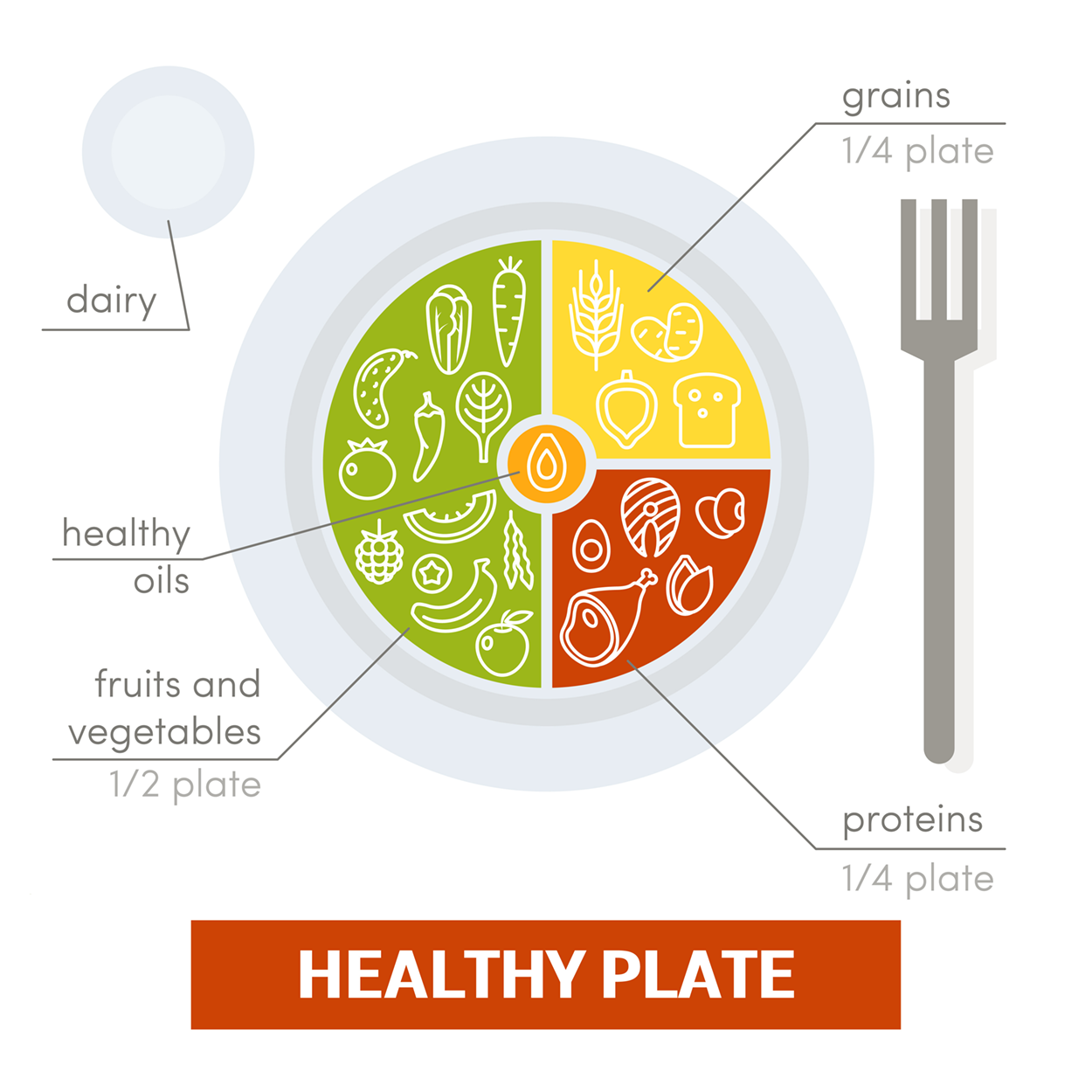Table of Contents |
Eating a healthy, balanced diet is one of the most important things you can do to protect your health. But what makes a healthy diet? In this tutorial, we will review the foundational concepts to a healthy diet. Healthy eating doesn’t involve any particular diet. Rather, it means prioritizing your health by fueling your body with a variety of nutrient-rich foods.
There are six classes of nutrients that we will cover in depth later on. These are carbohydrates, protein, fat, vitamins, minerals, and water. Each nutrient has many physiological roles in the body. Nutrients are made of elements (a substance like oxygen or carbon that cannot be separated into more simple substances) and elements make up living things. All nutrients are important for our health, but some are essential. Essential nutrients must be supplied by our diet because our bodies cannot make them. Water, for example, is the most essential nutrient because humans can only survive a few days without water. An example of a non-essential nutrient would be vitamin D since you can eat it, but your body can also make this vitamin.
The next concepts to discuss as we unravel the foundation of a healthy diet are macronutrients and micronutrients. Macronutrients are carbohydrates, fat, and protein, and our bodies require relatively large amounts of these to function well. Micronutrients are vitamins and minerals, and our bodies need relatively small amounts of these to function well.
The energy released from our macronutrients can be measured in calories. Calories are small units of energy. The units are so small that in order to make things more simple when we talk about nutrition, we use 1,000-calorie metric units known as kilocalories (shortened to kcalories, but commonly called “calories”). When you read that a snack provides “150 calories,” it actually means 150 kcalories.
Most foods are mixtures of nutrients, and water is generally the major nutrient in all foods. An example is 8 ounces of fluid skim milk, which contains about 91% water by weight. Milk is also a great source of protein, carbohydrates, vitamins, and minerals. In this example, we would say that the milk is nutrient-dense. Nutrient-dense means that the food we choose supplies more key beneficial ingredients (like fiber, protein, vitamins, and minerals) in relation to its calories per serving. In contrast, a candy bar may have about 40% water by weight, and though it contains protein, carbohydrates, vitamins, and minerals, these are in much smaller quantities. The candy bar would be energy-dense. Energy-dense means that the amount of calories per serving is high in relation to the amount of nutrients it provides. Some people refer to this as “empty calories”. This tells us that some foods are more healthy to consume than others. We sometimes have to be careful though.
EXAMPLE
Think about donuts and grapes. A 100g serving of a donut provides 400 calories and 100g of grapes provides 32 calories. The grapes have many more nutrients than the donut and have fewer calories.To begin, we need to understand moderation, balance, and adequacy. Obtaining nutrients from a wide variety of food is important to our health so that we can ensure we are getting the right amounts of nutrients. To help ensure the adequacy of our diet, we should eat from all food groups. We should also consume foods in moderation. Moderation means we eat foods in reasonable amounts and helps us to get enough nutrients from our food without having to eat excessive amounts of one food. An example of moderation is that you use portion control and eat reasonable amounts of lots of different foods. In the following image, you can see how a healthy plate is portioned.

The next major concept is balance. A nutritionally balanced diet is where we choose foods with more nutrient density and less energy density. If our diet has mostly nutrient-dense foods, we are more likely to meet our nutritional needs. We can still have energy-dense or “empty calories” on occasion (which is moderation).
Source: THIS TUTORIAL HAS BEEN ADAPTED FROM LUMEN LEARNING’S “NUTRITION FLEXBOOK”. ACCESS FOR FREE AT https://courses.lumenlearning.com/suny-nutrition/. LICENSE: creative commons attribution 4.0 international.